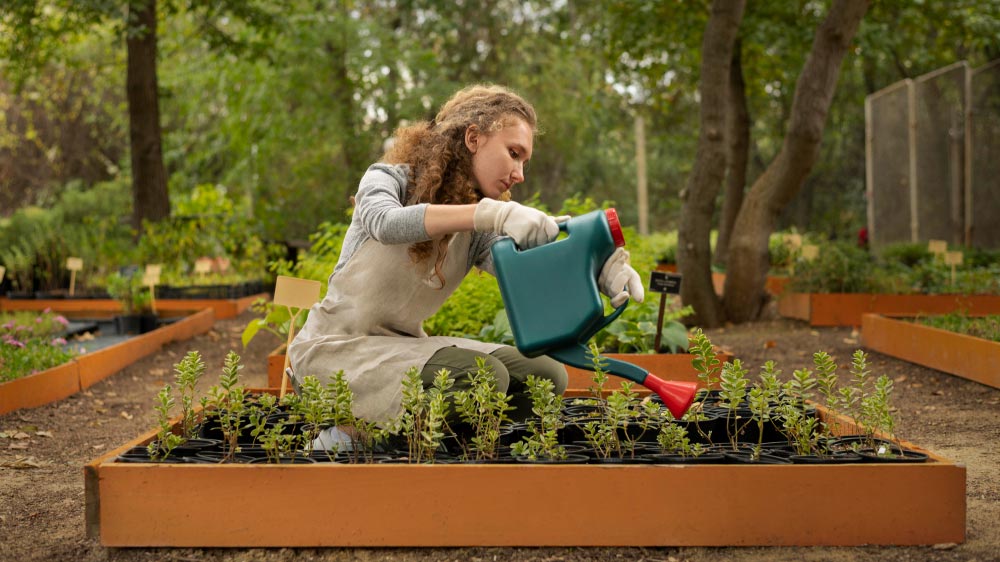Does A Raised Garden Bed Have To Be Level?

Gardeners face a variety of challenges when setting up garden beds. Not only do they have to deal with identifying the best platform for their garden, but also the construction material.
There’s also the challenge of choosing suitable soil amendments for the plants they intend to grow.
Without the right conditions in a raised garden bed, you will receive low yields or have a variety of troubles during growing. Another challenge gardeners face setting up a raised garden bed on hilly or sloppy land.
This brings us to our question – does a raised garden bed have to be level? No, it is not compulsory.
However, a level garden bed offers the best conditions for your plants to flourish.
If the land is not level, then it should be slightly sloppy and not too sloppy.
Building A Raised Garden Bed On An Uneven Surface
The topography of the place you want to erect your raised garden bed is vital. Some areas are hilly, while others are uneven. Instead of leveling the whole area, you can adjust the type of garden bed you create.
Most farmers start by building the bed on the higher side of the slope. Then, they lift the downslope edges of the garden bed until it is level.
Building a raised garden bed on an uneven surface can be very challenging as you may be required to use your eyes to ensure that it is level. Also, you might have to worry about the type of soil you use, as it varies depending on the depth of the slope.
Raising a level garden bed would be best if you want the best results for your plants. This comes with many advantages, such as the proper absorption of nutrients and water. Also, the nutrients, soil, and sun will mix to form the best environment for your plants to grow.
Besides, you will prevent soil erosion, which may carry away topsoil and rich nutrients.
Advantages Of Having A Level Raised Garden Bed
Absorb Water And Nutrients
A level-raised garden bed is vital as it ensures nutrients and water are absorbed into the soil. Level garden beds make it easy for the roots to absorb vital nutrients and water needed for growth. On the contrary, uneven surfaces don’t enjoy the same benefits as the water clears away topsoil and other nutrients on top.
When it rains, the leaves and roots of plants on a level surface are hydrated, which helps to distribute nutrients throughout the plant. But for plants on an uneven garden bed, only their leaves will absorb nutrients, not the roots.
Aside from that, an uneven garden may have a spot where all water gathers and forms a breeding ground for pollutants and other wastes.
Discourage Soil Erosion
The most significant advantage of having a level-raised garden bed is that you won’t experience soil erosion. An uneven surface experiences a lot of soil erosion, washing away the topsoil and its rich nutrients and minerals.
As a result, your plants will lack many essential nutrients, leading to several deficiencies. If you grow your plants on a level raised garden bed, you won’t have such issues.
Instead, the plants will get all the nutrients required for healthy growth.
Receive Enough Sunlight
Moreover, a level garden bed gives the plant enough sunlight as it hits on all sides. But on a slope, one side will get more light than the other. This means that one side of the plant won’t grow as fast as the one facing the sun.
Therefore, the plant’s side that won’t receive enough light will have its leaves growing towards the sun.
But plants on level soil that receive equal sunlight on all parts will grow steadily without bending.

What Happens If A Raised Garden Is Slopped?
A lot can go wrong if your raised garden bed is slopped.
Most species of plants have no difficulty growing on uneven land, but if there’s a large number of plants on the same sloped raised bed, it becomes difficult for them to grow and produce fruits properly.
When you water plants planted on sloppy soil, there is an uneven water distribution among the plants. The plants in the highest part of the land dry out first.
Ultimately, a sloped garden bed makes plants not grow evenly.
How To Level A Raised Garden Bed On A Slope
We have seen that a raised or level garden bed is crucial for your plant’s growth and productivity. But If your land is sloppy, what can you do about it?
Leveling a raised garden bed is the best solution in this scenario.
To level a raised garden bed on a slope:
- Place your garden box in the sloppy area, then dig out the soil.
- Use a measuring tape from the bottom of the box to the soil’s surface. This measurement will give you a clue about the level or depth of the soil that needs to be removed.
- Ensure there are no weeds in the portion where your garden bed will sit.
- Dig the required depth from the upper end of the slope
- Once your garden bed sits perfectly on the land, you can fill it with soil.
Final Thoughts
Whether you live on inclined or flat land, you can erect your raised garden bed as you wish. More so, regardless of your terrain, you need a level garden bed if you want your plants to grow steadfastly and healthily.
Mounting your raised garden bed on an uneven surface is a great idea, but it has several limitations. If you live on a slope, make a few adjustments to raise your garden bed level. A level-raised garden bed won’t erode soil, but it will absorb nutrients and water better.
Also, it will receive even sunlight, unlike a slope with shadow areas.
With these conditions, your plants will grow well and receive everything they need to flourish.